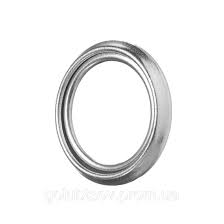hydraulic bonded seal
Understanding Hydraulic Bonded Seals An Overview
In the world of fluid mechanics and sealing technology, hydraulic bonded seals have emerged as a crucial component in ensuring efficient systems across various industries. These seals play an integral role in preventing fluid leaks and maintaining the integrity of hydraulic systems. This article explores the key aspects of hydraulic bonded seals, including their construction, application, advantages, and potential challenges.
What Are Hydraulic Bonded Seals?
Hydraulic bonded seals, often referred to simply as bonded seals, are specialized sealing devices designed to provide a reliable barrier against fluid leaks in hydraulic applications. Typically constructed from a resilient elastomer material, these seals are designed to withstand the high pressures and variable temperatures common in hydraulic systems. Their unique design incorporates a metal washer that helps distribute the load and minimize the risk of deformation which can lead to leaks.
Construction and Design
The construction of hydraulic bonded seals typically includes two primary components the elastomeric sealing element and a metallic washer. The elastomer element is usually made from materials such as nitrile rubber, fluorocarbon rubber, or silicone, which offer excellent resistance to various fluids including oils, fuels, and water. The metal washer, often made from steel or brass, helps to reinforce the seal and provides structural stability.
The bonding between these two materials is achieved through a specialized manufacturing process that ensures a strong, durable connection. This bond is critical as it prevents the two components from separating under high pressure, thereby enhancing the seal's performance and reliability.
Applications of Hydraulic Bonded Seals
Hydraulic bonded seals are widely used in numerous industries including automotive, aerospace, manufacturing, and oil and gas. They are commonly found in hydraulic cylinders, pumps, and various types of valves, where they facilitate the efficient function of hydraulic systems by preventing leaks.
In automotive applications, bonded seals are often used in power steering systems and hydraulic brakes. In the aerospace sector, they are vital for fluid systems that require absolute reliability under extreme conditions. The oil and gas industry also employs bonded seals in machinery and piping systems where the prevention of fluid loss is crucial for safety and efficiency.
hydraulic bonded seal

Advantages of Hydraulic Bonded Seals
The primary advantage of hydraulic bonded seals lies in their ability to provide exceptional sealing performance under high pressure and temperature variations. Their design allows for greater flexibility and adaptability, making them suitable for dynamic as well as static applications. Some of the notable benefits include
1. Leak Prevention By providing a tight seal under varying pressures, these seals effectively prevent the loss of hydraulic fluids, contributing to the efficiency and safety of the system.
2. Durability The combination of elastomer and metal in hydraulic bonded seals ensures enhanced durability, even in harsh environments, increasing the longevity of the seals.
3. Versatility With a range of materials and sizes available, hydraulic bonded seals can be tailored for specific applications, providing versatility across different industries.
4. Cost-Effectiveness By preventing leaks, these seals not only improve system efficiency but also reduce maintenance costs and downtime, offering a cost-effective solution in the long run.
Potential Challenges
While hydraulic bonded seals offer numerous advantages, they are not without challenges. The primary challenge is the potential for material degradation over time due to exposure to chemicals, extreme temperatures, or mechanical stress. Regular inspection and maintenance are crucial to ensure the seals remain effective. Additionally, improper installation can lead to seal failure, underscoring the importance of adhering to manufacturer specifications during the fitting process.
Conclusion
In conclusion, hydraulic bonded seals are essential components in modern hydraulic systems, offering reliable performance and leak prevention across a myriad of applications. Their robust design and material engineering make them suitable for harsh conditions, while their adaptability ensures that they meet the diverse needs of different industries. Although challenges such as material degradation and installation issues exist, the benefits they provide in terms of efficiency and cost-effectiveness make them a valuable asset in hydraulic technology. As industries continue to evolve, the importance of hydraulic bonded seals will undoubtedly remain critical to the success of fluid systems globally.
-
Simplifying Oil Changes: A Comprehensive Guide to Oil Drain Plugs and Their Variants
News Aug.04,2025
-
Mastering Oil Drain Maintenance: Solutions for Stripped, Worn, and Upgraded Oil Plugs
News Aug.04,2025
-
Fixing Oil Pan Plug Issues: Leaks, Stripped Nuts, and the Right Replacement Solutions
News Aug.04,2025
-
Everything You Need to Know About Oil Drain Plugs: Sizes, Fixes, and Upgrades
News Aug.04,2025
-
Choosing the Right Oil Drain Plug: A Guide to Sizes, Materials, and Drain Innovations
News Aug.04,2025
-
A Complete Guide to Automotive Drain Plugs: Types, Problems, and Innovative Solutions
News Aug.04,2025
-
The Ultimate Guide to Car Repair Kits: Tools and Essentials Every Driver Should Own
News Aug.01,2025
Products categories















